Artificial Intelligence (“AI”) is a technology that is present in our daily lives, both at a personal level through the various devices, applications, and services we use daily, and in organizations, which are increasingly demanding the use of this technology.
Due to this situation, the European Union (“EU”) has approved the Artificial Intelligence Regulation with the primary objective of ensuring that AI systems are safe and respect EU fundamental rights, laws, and values at all times.
The Artificial Intelligence Regulation
The Artificial Intelligence Regulation defines AI systems as:
“a machine-based system designed to operate with varying levels of autonomy, capable of adapting upon deployment, and which, for explicit or implicit purposes, infers from input information it receives how to generate output information, such as predictions, content, recommendations, or decisions, that can influence physical or virtual environments;”
In this sense, a large number of organizations are beginning to develop and implement AI in their business processes with the goal of improving and optimizing them, thus taking advantage of its great transformative potential. However, it is essential to keep in mind that this requires a strategic approach to how to use and leverage AI.
AI has a direct impact on people's daily lives and, therefore, their lives. This raises countless questions about the ethics of AI and the trust users have in it.
Therefore, for all organizations wishing to implement this technology, in addition to taking into account new and upcoming regulations, it is necessary to consider the ethical considerations of its use.
This leads us to consider the correct approach to follow when implementing AI in our organization, and this is where we find Responsible AI (“RI”), also known as trustworthy AI.
What is Responsible Artificial Intelligence?
Responsible Artificial Intelligence is based on the definition and implementation of AI systems that follow ethical guidelines and principles, with the goal of ensuring that they are transparent, impartial, and responsible, so that the use of AI in the organization is safe and reliable.
Responsible Artificial Intelligence focuses on placing the individual at the center of design, with the goal of considering both the potential harms and the benefits this technology can bring. This approach helps organizations achieve a fair and ethical impact and build a framework of trust with their customers, employees, and society at large.
In this regard, the Independent High-Level Expert Group on AI presented in 2019 some Ethical Guidelines for Trustworthy AI, which are essential in the definition of IAR systems.
What are the key requirements for implementing Responsible Artificial Intelligence?
To implement Responsible Artificial Intelligence in your organization, it is essential to consider and implement certain requirements that ensure all AI systems are transparent, ethical, and fair. Below are the seven requirements established by the High-Level Expert Group in its Guidelines on AI:
- Human intervention and supervision. It establishes the need for AI systems to be properly supervised. Different types of human supervision are distinguished for this purpose:
- Human participation: It is based on human intervention in the different processes in which AI makes decisions.
- Human Control: Focuses on human control from the design of the AI and throughout its operation.
- Human control: This is the ability to supervise the overall activity of AI, including the ability to decide whether or not to use it in a given process.
- Technical solidity and securityIt is essential that AI systems be able to prevent potential harm that may result from behaving differently than established criteria. Furthermore, any unforeseen or unintentional harm should be minimized in the event that this occurs.
Likewise, like any software, it is essential that it be properly protected against any potential vulnerabilities that could affect it. There are various attacks that can be directed against AI systems, which could seek, for example, to manipulate decisions made by the AI.
- Privacy and data managementIt is based on the protection of personal data and the privacy of individuals, ensuring that all applicable privacy regulations are respected. This implies implementing privacy by design and default, ensuring that there is a legal basis for data processing, etc.
- Transparency. It argues that all the logic and rationale behind AI decision-making must be clear, understandable, and explainable. This means that organizations will need to work on creating transparency mechanisms that allow individuals to easily understand how and why decisions are made.
- Diversity, non-discrimination and equityThis implies that AI systems must always guarantee fair and bias-free treatment of all individuals. This means that decision-making must be impartial and should not take into account criteria such as race, sex, age, etc. when making decisions. This ensures that AI benefits everyone equally.
- Social and environmental well-beingAI must take into account society as a whole, not just the individual. This means promoting environmentally responsible AI, for example, by ensuring that it only consumes the resources necessary to operate, and analyzing and assessing its impact on society.
- AccountabilityIt is based on the creation of mechanisms that ensure the responsibility of AI decisions and accountability for these systems at all times.
However, it's important to note that each organization can define its own AI framework, which involves creating internal policies, implementing specific controls and audits, training employees in AI best practices, and so on. The key is always to create a framework that guarantees the ethical use of AI throughout all its lifecycles, while always respecting applicable regulations.
Now it's time for all organizations to review their internal processes and implement measures to ensure the responsible and ethical use of AI!
Want to learn more about Compliance and Data Protection? Visit our blog




































